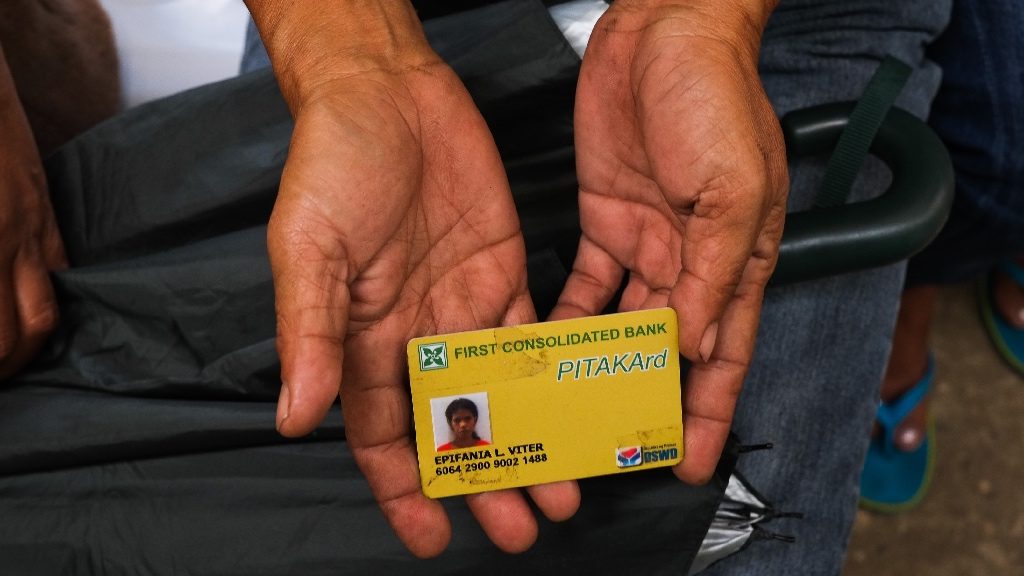SUMMARY
This is AI generated summarization, which may have errors. For context, always refer to the full article.

Conditional cash transfers (CCT) are a stepping stone to universal health coverage, not just help for individual families.
ADB recently approved a $400 million loan for the Philippine government to expand the CCT program, which started in 2008 and has since expanded to become the third largest such program in the world after Mexico and Colombia, covering more than 4.4 million poor households in under a decade.
The CCT program gives cash transfers to poor families, provided, among other things, that pregnant household members seek antenatal care and a health professional delivers the baby. It requires that children aged 5 years and younger are immunized and monitored in case of malnutrition, and that children aged 6 to 14 are dewormed twice a year. More than just granting cash, the program intends to break the vicious intergenerational nature of poverty.
From a broader health sector perspective though, CCT programs can catalyze the attainment of universal health coverage (UHC), with all people having access to health services without suffering financial hardship. Yes – all, not just the poor who are covered under the program.
The ADB-supported CCT program in the Philippines has brought about an objective and transparent determination of who is poor. Prior to the CCT rollout, determination of this was done either by the local government unit or by social workers in hospitals who assess the sick. Although tools were in place for assessing those in poverty, in reality the process was highly politicized and unreliable. Many non-poor made it onto the ‘poor list’ and received benefits that should rightly have gone to more needy citizens.
An objective and transparent targeting system, whether managed at the national level or with sub-national participation, gives governments a robust listing of poor households who need social protection programs. Thus, Mexico and Colombia are also subsidizing their poor into their health insurance or health protection schemes. We are seeing the same story happening in several other countries in Asia and the Pacific, like Indonesia and Pakistan.
The CCT program’s linking of cash transfers to individual health-seeking behavior has also help bring about changes in the dynamics between patients and their primary care providers, as well as making providers more accountable stewards of health. Health providers now have information to target and follow up on the neediest patients. Patients, on the other hand, are more empowered and able to move away from the patronizing approach and language of charity health services toward demanding not just more services, but better quality services.
In addition, with summaries and aggregated data, health providers now have to record service as it relates to or is linked to an individual, which is useful in making sure health outcomes are tracked. In short, providers are challenged to better care for the population they serve, with a focus on individuals.
An impact evaluation conducted on the Philippines CCT program so far has shown that the scheme has contributed to boosting prenatal and postnatal care by over 10%, and increasing the number of babies delivered in health facilities by skilled health professionals by more than 20%. The number of children receiving a higher intake of vitamin A and iron supplements has risen by around 12%, while weight-monitoring visits have expanded by 18%. CCT programs allow governments to efficiently focus resources to improve access of the poor to health services. Cash transfers are increasingly bundled with subsidized health insurance coverage, medicine access programs, and other health entitlements. Empowered poor families with the protection of health insurance and improved supply of healthcare, including privately provided health services, have become the norm.
Finally, CCT programs are making governments rethink cash transfers and other similar government interventions such as subsidies for health insurance coverage, and start viewing them not as mere recurrent expenses but as a new type of budgetary allocation that could potentially transform supply-driven systems into demand-driven, empowering and performance-oriented systems.
Conditional cash transfers then are clearly about more than just handing out funds. Subsidizing poor households with cash, health insurance coverage and other similar individual and household level subsidies are investments countries should consider because these will make UHC a reality for all in Asia and the Pacific. – Rappler.com
Dr. Banzon champions UHC and has long provided technical support to countries in Asia and the Pacific in their pursuit of this goal. Before joining ADB, he was President and CEO of the Philippine Health Insurance Corporation, WHO regional adviser for health financing, World Bank senior health specialist, and a faculty member of the University of the Philippines’ College of Medicine and the Ateneo University Graduate School of Business.
Add a comment
How does this make you feel?
There are no comments yet. Add your comment to start the conversation.